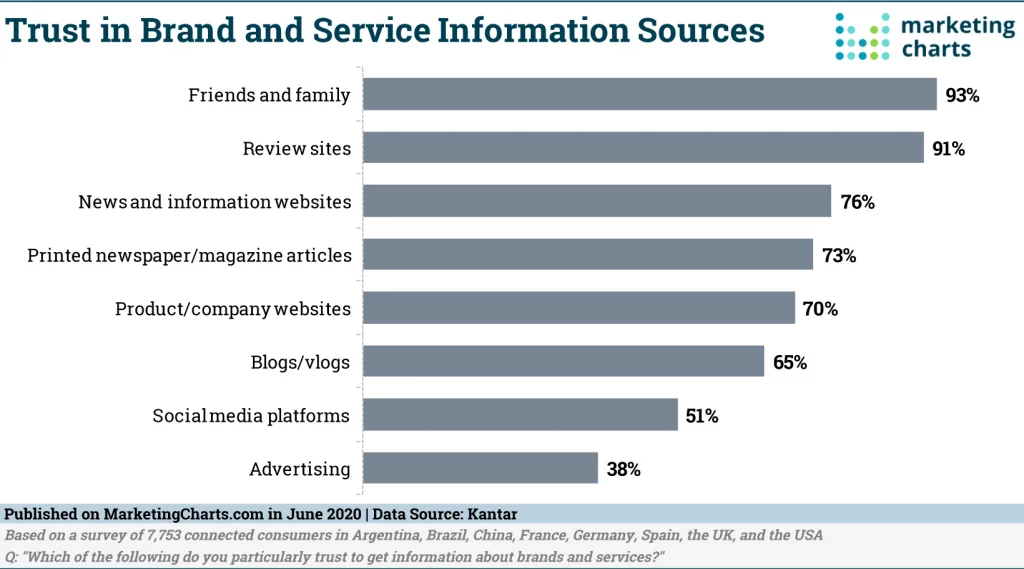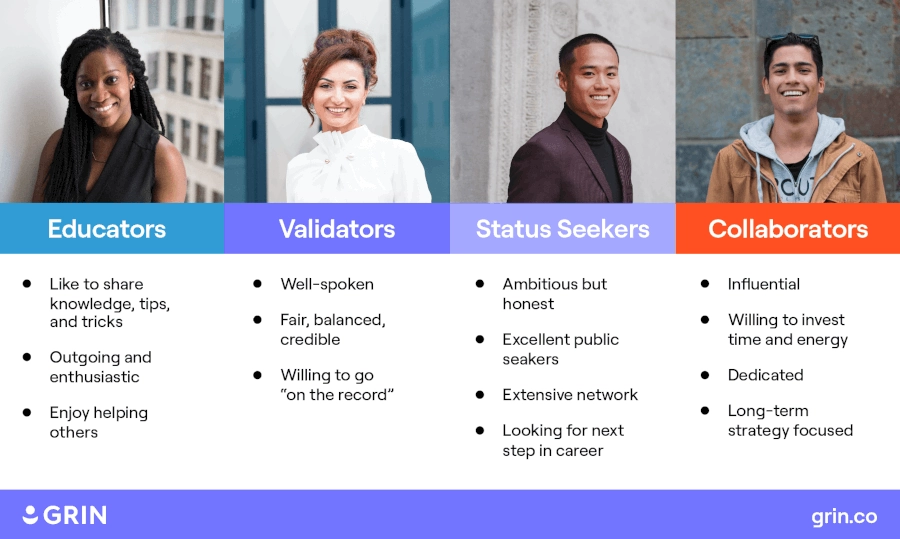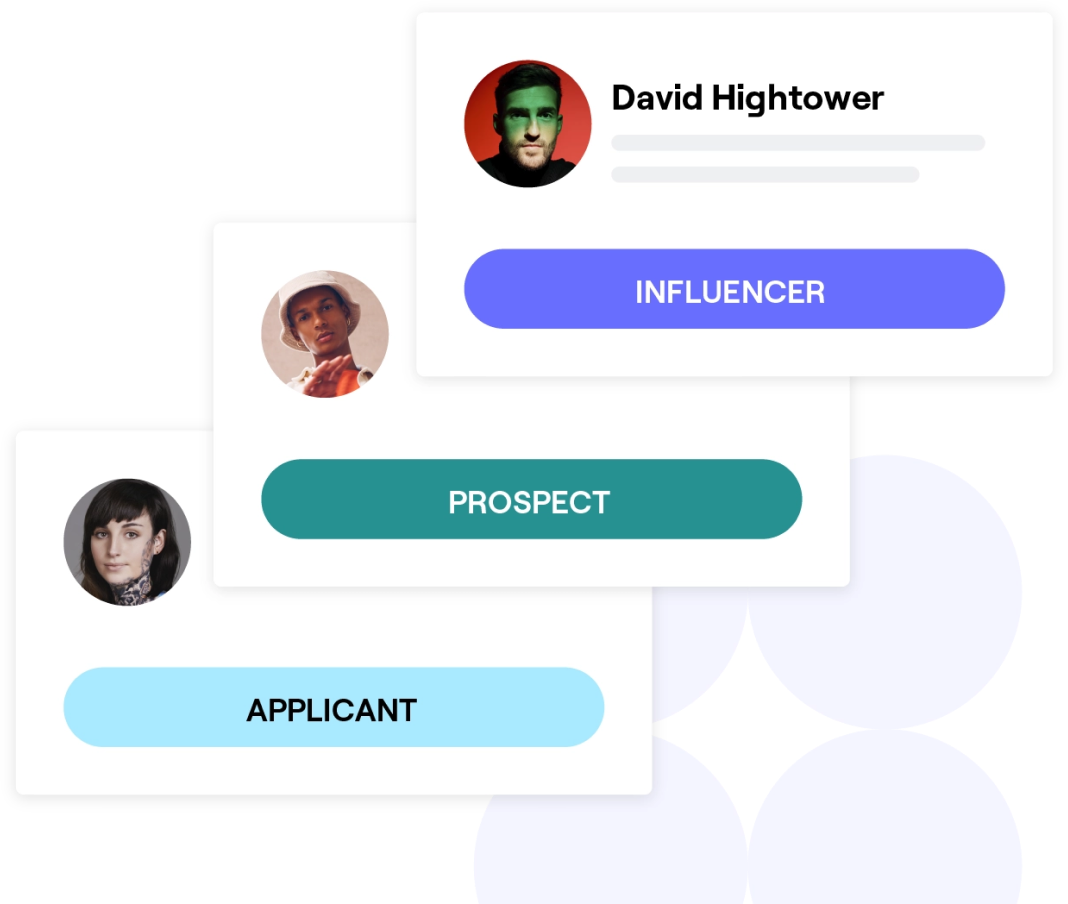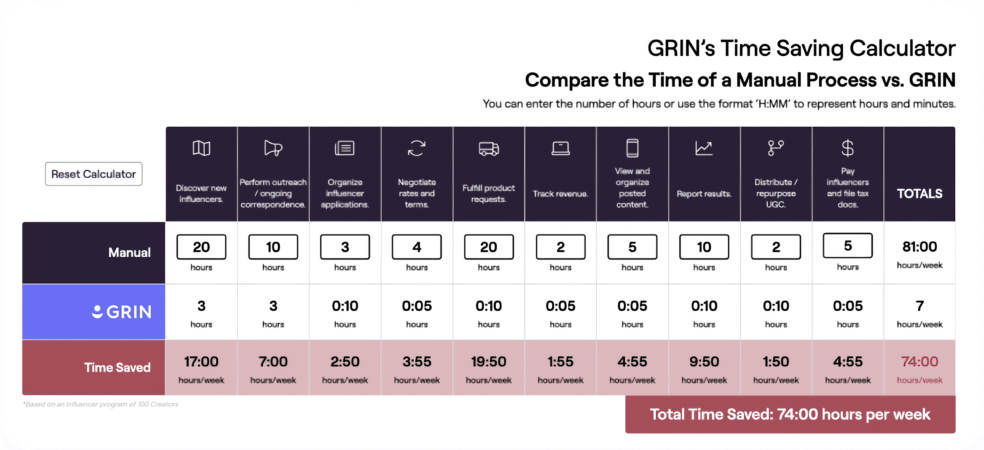True brand love means nurturing meaningful relationships with consumers. When done correctly, you’ll accumulate plenty of happy customers eager to advocate for your brand online.
Leveraging your loyal fans through a customer advocacy program is one of the most effective and cost-efficient ways to expand your reach and drive conversions. These advocates promote your brand through genuine brand affinity rather than self-interest, unlocking the social proof you need to stay ahead of your competitors.
What is a customer advocacy program?
Customer advocacy marketing publicizes user-generated content (UGC) from real customers to promote brand credibility among target audiences.
This marketing approach may take many forms, including product reviews, influencers, brand ambassadors, client case studies, referral programs, and more. If you know how to publicize authentic customer feedback with the customer’s permission, there’s almost no wrong way to go about customer advocacy marketing.
A customer advocacy program intentionally converts loyal customers into vocal brand promoters.
The key to a successful customer advocacy program is maintaining relationships with customers who have the social influence and genuine brand love to promote your brand effectively among their peers. Customer advocates should be well-spoken and socially engaged with your brand and other consumers.
Benefits of customer advocacy marketing
Consumers view traditional, branded messaging as biased and inauthentic. As a result, these approaches are becoming antiquated and less effective in today’s creator economy.
Consumer word of mouth remains one of the most genuine sources for product recommendations. When a trusted friend or family member relates a positive experience with a brand, studies show audiences are far more likely to trust that brand.

Brand credibility is just one benefit of a robust customer advocacy program. Other benefits include:
- Social proof
- Word of mouth
- Lower customer acquisition costs
- Greater customer lifetime value
- UGC
- Brand communities
How to choose the best advocates for your program
Nearly any online creator could make a great candidate for your customer advocacy program. The most critical criteria for your program is selecting advocates who know your brand, use your products, and genuinely believe in both.
Brand-advocate relationships become strictly transactional when advocates don’t actually care about the brands and products they promote. This is something that consumers can spot right away and will not inspire the trust necessary to maintain a successful program.
Next, you need to understand what motivates customers to promote your brand. It’s not enough to ask customers for favors—your advocacy program needs to be mutually beneficial.
Forrester Research examined successful customer advocacy programs and identified four main types of advocates:
Educators want to be key opinion leaders (KOLs) and sources of reliable information for their audience.
Validators possess great emotional intelligence and are happy to endorse your product publicly, but they prefer private thanks and appreciation over publicity.
Status seekers are ambitious, and if they’re not already influencers, they often aspire to be.
Collaborators like to explore and tinker with ideas. They are creative and innovators at heart.

Happy customers within each of these categories make great customer advocates. But it’s up to you to understand which type of advocate each of your customers is and how you can channel their motivations to build a mutually beneficial relationship.
How to start a customer advocacy program
Pre-launch: Creating your customer advocacy strategy
A well-organized customer advocacy campaign is a successful customer advocacy campaign. An ad-hoc approach produces poor results and leaves advocates confused about their expectations.
Defining clear goals is the first step to setting up your program. Building a community of advocates can help you scale your business quickly, but you should itemize each objective before launching your advocacy campaigns.
If you’re like most brands, you want your program to lower acquisition costs and increase sales. But you can also be more strategic with those goals and break them down into more specific deliverables.
Among the most common customer advocacy goals are:
- Web traffic
- Brand awareness
- Conversions
- Social media engagement
- UGC
How do you ask someone to join your customer advocacy program?
When recruiting brand advocates, you need a value proposition that incentivizes them to join.
“The way you think about why a customer would participate in an advocacy program should align with the way you think about why a prospect would buy your product/service … Customers should feel they are getting much more out of the advocacy program than they are putting in.”
— HubSpot
Be careful not to treat your program as “calling in favors.” Your customers have already bought from you, so they don’t really owe you anything more.
Instead, consider which type of customer advocate they are (educator, validator, status seeker, or collaborator) and offer that customer something in return for their help.
“When we’re creating an advocacy program, we have to think about how being a part of the program helps the advocate or ambassador make progress toward where they want to be in their lives. If people aren’t making progress in that way, they won’t participate. And you’ll see that reflected in your metrics.”
— Carrie Melissa Jones, from the GRIN Gets Real podcast
If influential customers are already promoting your brand on social media, start there. Send them a quick message thanking them for the shout-out. Then you can follow up with an offer.
See Also: Best Practice Email Template Suggestions
What do advocates get in return for participating?
Prospects prefer different kinds of perks depending on the type of advocate they are.
For example, many advocates love getting new products for free (validators and collaborators), while others prefer publicity (educators and status seekers).
Some common ways to incentivize customer advocates are:
- Free products and services
- Public recognition
- Private recognition
- Exclusive access to products, services, or information
- Travel and event perks
- Collaborations on future products
Who will manage advocacy relationships?
It isn’t enough to collect a list of happy customers, give them free products, and ask for word-of-mouth advertising. You’ll have much more success appointing someone who can nurture your advocate relationships for the long term.
Taking your advocate relationships seriously helps keep your content authentic rather than transactional. The best customer advocacy programs maintain deep brand-advocate connections.
Make sure your customer advocates feel the brand love and allow them to express that love genuinely in their social media activity. The moment consumers sense manufactured excitement, you lose credibility.
Do you need software to track customer advocacy performance?
Social media is the best place to monitor your customer advocacy performance. But you’ll need a process for keeping track of what your advocates are doing and how effective their efforts are.
In the early stages of your program, you can create a spreadsheet with each advocate’s name, social handles, links to promotional content, and key engagement metrics (likes, comments, shares). If any of your advocates are brand ambassadors, influencers, or affiliates, you might also want to track custom links, tags, coupon code redemptions, etc.
As you grow, you will eventually want to invest in creator management tools that enable you to manage your campaign and advocate relationships at scale. The right tools will also allow you to track your program’s ROI easily, so you know which tactics are working best.
Launch: Starting your customer advocacy program
While it’s true you shouldn’t micromanage your advocates, giving them direction allows them to channel their excitement effectively. Because these are mutually beneficial relationships, you should provide everything your advocates will need to succeed.
Keep the following in mind to help with a successful campaign launch:
Establish some ground rules.
Authenticity is not an excuse to allow customers to tarnish your brand’s reputation or act against your values. As such, give your advocates some insight into your mission and brand voice.
You should also set some basic parameters to keep your advocates informed about best practices and basic do’s and don’ts. Creating a campaign brief that outlines what you expect from your advocates and listing relevant tags, hashtags, and guidelines is a great way to put your ground rules in writing and keep your campaign organized.
Involve marketing, sales, and customer service.
Many seasoned customer advocacy programs use teams consisting of marketing, sales, and customer service representatives. Including these folks gives you a better perspective on your customers and equips your team to standardize your relationship management process.
Collaborate with your advocates.
It’s essential to treat your advocates like valued partners rather than subordinates. Remember, you’re asking them to leverage their reputation to promote your brand, and as such, they’ll have plenty of great ideas for generating authentic engagement and brand awareness.
Keep your advocates informed.
Seasonal promotions, events, and product launches are just a few of the things that your customer advocates would love to know about on a regular basis. The more you keep your advocates in the loop, the better they can help promote your brand online.
Post-launch: Measuring the success of your customer advocacy program
Your campaigns will improve over time as you track key metrics and nurture advocacy relationships. After each campaign, it’s always a good idea to take stock of the results.
For most customer advocacy campaigns, meaningful engagement is one of the best ways to track success. These metrics demonstrate how often a customer’s followers noticed and reacted to branded content.
The most common engagement metrics to track on social media are:
- Views/reach/impressions
- Post reactions (likes, hearts, etc.)
- Comments
- Post shares
- Shared tags and hashtags
Supply your high-performing advocates with conversion tools like affiliate links and discount codes to ensure you’re attributing conversions to the right people.
For new customer advocacy programs, many of these performance metrics are simple to track manually on a spreadsheet. But it’s tough to scale a customer advocacy program when it grows into a community of 10 or more advocates. At that point, you should consider investing in an automation platform to help track your program.
Examples of customer advocacy marketing
Chipotle
What they did
Chipotle created a popular TikTok challenge that generated an entire archive of customer posts promoting the brand.
The challenge started with a Chipotle employee who put her own creative spin on assembling customers’ burrito bowls. Soon, thousands of Chipotle fans began submitting their own #ChipotleLidFlip videos. The challenge spread quickly through TikTok and eventually made its rounds on Instagram and YouTube.
@mvnnyrose here are some lid flip fails for y’all 😂#ChipotleLidFlip @chipotle #foryoupage#foryou ♬ Flip – Future
Why it worked
Chipotle created a fun activity previously only known among employees and converted the experience into a branded hashtag. Chipotle accumulated thousands of participants—many of them influencers and high-profile customers.
Key takeaway
Customer advocacy marketing doesn’t have to be complicated or expensive. In Chipotle’s case, seeing customers having fun at a local store increased engagement among customers and raised awareness of certain menu items.
Starbucks
What they did
Starbucks set a high standard for customer advocacy marketing in 2013 with its Tweet-a-Coffee campaign. The initiative allowed customers to link their Starbucks app to their Twitter account and tweet a friend’s handle to @tweetacoffee. That friend then received a free $5 gift card redeemable at any Starbucks location.
We’re excited to announce @Tweetacoffee, a new way to share the gift of Starbucks: https://www.starbucks.com/tweet-a-coffee/
— Starbucks Coffee (@Starbucks) October 28, 2013
Why it worked
Customers everywhere embraced the fun, “pay-it-forward” approach. The campaign encouraged new customers to try products for the first time and placed Starbucks front of mind for millions on Twitter.
Key takeaway
Customer advocacy programs are highly effective when they encourage gifting between customers. The Tweet-a-Coffee campaign took an old idea (gift cards) and made the experience memorable and interactive.
Southwest Airlines
What they did
COVID-19 was hard on air travel, but that didn’t stop Southwest from inviting customers to have fun on flights. The brand regularly encouraged passengers to reply to content from the main account with their own photos, as seen in the tweet below.
Southwest is also known for performing customer care openly on social media. Customer disputes receive validating responses, suggestions, and alternative solutions. Southwest keeps its social media activity consumer-focused in all aspects.
Why it worked
Southwest generally maintains a light-hearted attitude online, and its marketing team regularly employs humor and audience participation in its content strategy. Consumers enjoy the interactions and are happy to engage as a result.
Key takeaway
Even though you’re a business, you should always remember your customers are real people and treat them as such. Refusing to get defensive in response to public consumer complaints demonstrates your willingness to provide the best customer experience. Keeping your content fun and inviting tends to encourage the best UGC.
Conclusion: Successful advocacy relationships require serious effort and the right tools.
Happy customers are willing to spread brand love as far as they can. That’s why a thriving advocacy program accelerates trust-building among your target audience, builds brand awareness, and greatly enhances the impact of each marketing touchpoint.
But to build a successful program, your brand has to go all in. Customer advocacy programs require great care to nurture the relationships needed to see returns. And when your program begins to grow, it’s critical to invest in the tools that enable your brand to discover new advocates, communicate, manage, and analyze your partnerships at scale.
Download:

















